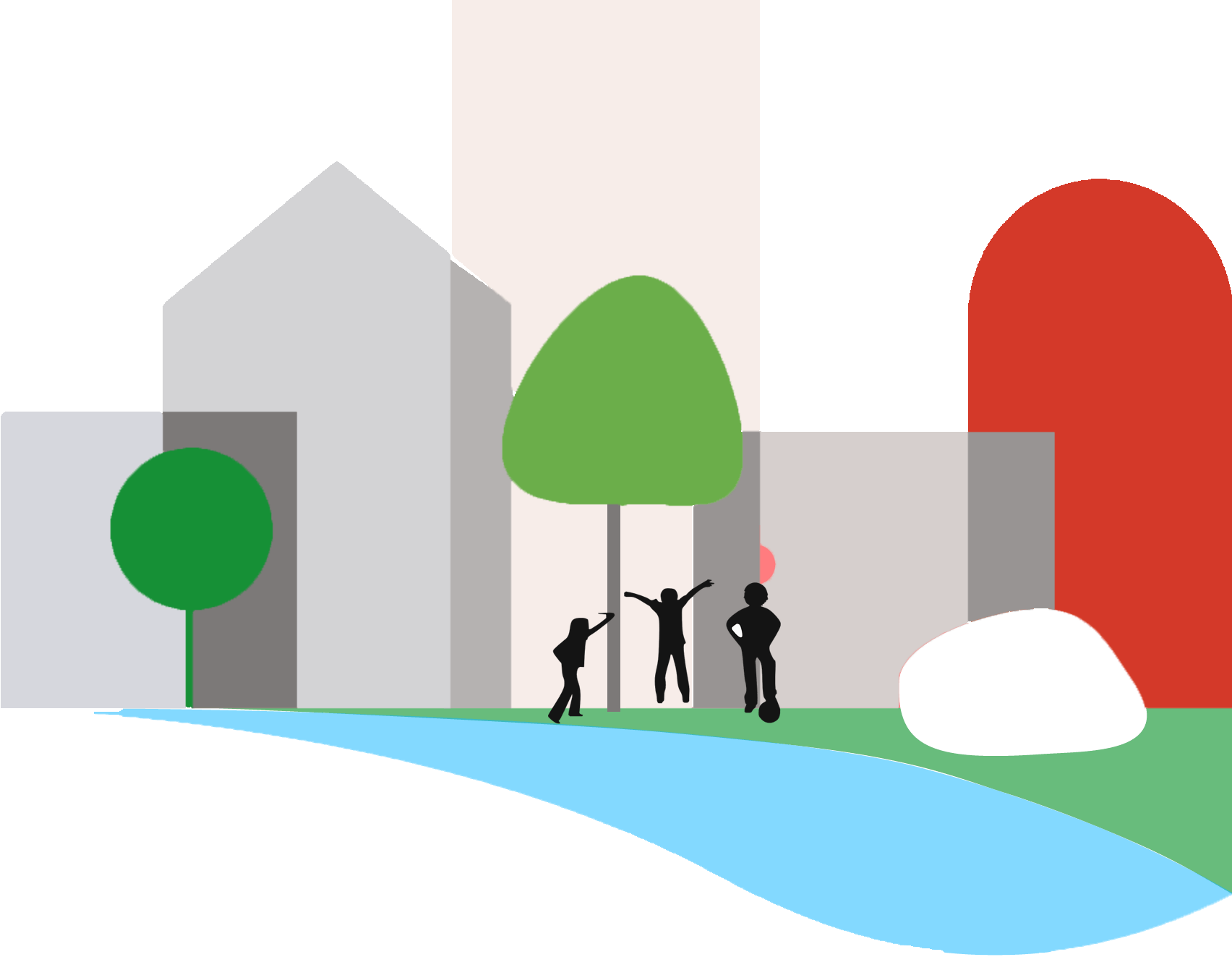
ABOUT
The Community Planning + Visualization Lab investigates the interplay between individuals and their "total" environment (e.g., social, natural, and built environments) and how this interconnection impacts the planning process for creating sustainable, healthy, equitable, and smart communities. The lab explores the effects of environmental injustices, climate change, and extreme weather events on environmental health and social equity, aiming to uncover solutions that promote resilience and justice for vulnerable or overburdened communities. Finally, we acknowledge that many planning processes and outcomes often overlook crucial aspects of human and social experiences, as planners have predominantly emphasized issues related to physical health while neglecting mental and emotional well-being. Our goal is to evaluate and comprehend how community perceptions and emotions are linked to the total environment and how such connections may impact the process of creating happy and restorative cities and neighborhoods.
The lab's projects are divided into four research tracks: (i) Community food systems, food environment, and food security; (ii) Green, blue, and gray infrastructure; (iii) Sustainable development, design, and policy; and (iv) Digital tools, technologies, and societies. Our work encompasses several planning sub-fields, including environmental planning, food systems planning, community planning, and spatial/physical planning.
Our lab's projects span a diverse range of geographic locations, from large cities like Philadelphia, PA, and mid-sized cities like Buffalo, NY, to small cities like Camden, NJ, college towns like Glassboro, NJ, and typical suburban towns like Washington Township, NJ. However, the primary focus is on communities facing environmental injustices, whether in Buffalo, Philadelphia, or Camden.
The lab follows a mixed-methods research approach, employing an innovative blend of tools and methods, including but not limited to:
-
community engagement tools and methods (e.g., surveys, focus groups, interviews, community workshops, community-engaged research, photovoice, social media platforms, digital storytelling, crowdsourcing, community mapping, citizen science, community advisory boards);
-
geospatial technologies (e.g., GIS, remote sensing, GPS, spatial data analysis and mapping); and
-
smart/digital technologies (e.g., social media analysis, mobile data collection apps, machine learning and artificial intelligence, smart sensors, virtual reality).
QUICK FACTS - Aug 2024
Year Established: 2016
Number of Completed Projects: 21
Number of Ongoing Projects: 7
Major Funding Agencies: NASA, US EPA, NSF, Robert Wood Johnson Foundation, NJ Board of Public Utilities, PA Department of Environmental Protection
Research Funding: $1.4 million (including $40k internal grant)
Number of Community Partners: 18
Number of Students Hired/Supervised: 56
Geography of External Collaborators: Australia, Bangladesh, Czech Republic, India, Netherlands, New Zealand, Spain, UK, USA
Notable Projects:
Unearthing the Urban Agriculture–Environment Connection: Implications for UA Planning, Practice, and Policy (2024 - 2026), sponsor - NASA
Greening Camden: Educating, Empowering, and Enriching Communities for Climate Action and Cleaner Air (2024 - 2026), sponsor - US EPA
The Project GrEEEn: Utilizing an Environmental Justice Lens and Earth Science Data to Enhance Greenspace Equity, Exposure, and Experience (2022 - 2024), sponsor - NASA
The EMoGI Project: Emotional Mapping of Green Infrastructure in Disadvantaged Urban Places (2022 - 2023), sponsor - Rowan University
Glassboro Food & Health Equity Project (2020 - 2022), sponsor - Robert Wood Johnson Foundation
Brownfields Area-Wide Plan for Philadelphia's Lower North Delaware Industrial District (2017 - 2019), sponsor - US EPA
Camden Waterfront South Green Infrastructure Master Plan (2018 - 2019), sponsor - CCMUA
Using Immersive and Multi-Sensory Virtual Reality in Participatory Planning (2017 - 2018) - Rowan University
RESEARCH TRACKS
Planning sub-fields: environmental planning, food systems planning, community planning, and spatial planning
Climate Change
Social Equity
Environmental Health
CONTACT
Mahbubur R. Meenar, Ph.D., GISP
Associate Professor of Planning
Department of Geography, Planning, and Sustainability
School of Earth and Environment
Rowan University
201 Mullica Hill Rd, Glassboro, NJ 08028











